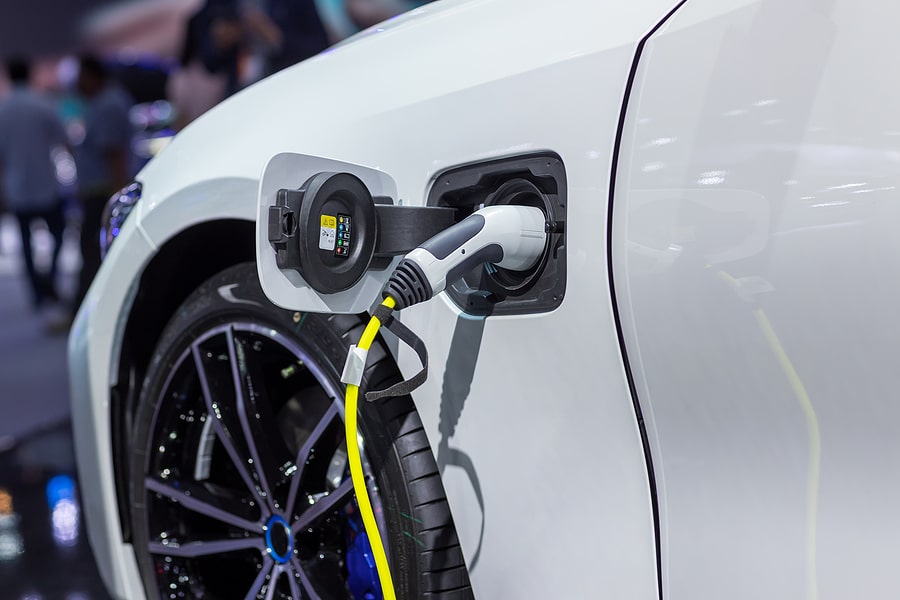
This year, more and more electric vehicles (EVs) are getting out of dealerships and hitting the roads. The main reason? They’re environmentally friendly. These cars don’t produce harmful emissions and also cause minimal noise pollution.

But how do electric cars move from point A to point B? This post will take you through the main parts and systems that make EVs run. And don’t creep out because this won’t be an electrical engineering class. We’ll try to break down the complex topics into digestible ideas.
How Do Electric Cars Work?
First, it’s not always easy to know that a car is electric from the outside. One reason is that car manufacturers are eliminating internal combustion engines in existing models and replacing them with electric systems. One way to tell the difference is that EVs are almost silent in such a case.
Second, like automatic transmission cars, EVs have forward and reverse modes. Let’s now look at the most fundamental parts of an electric vehicle:
- Battery pack: Rechargeable batteries store electric energy through direct current (DC). In short, the pack functions like a fuel tank.
- Inverter: This device converts high-voltage DC power to lower-voltage alternating current (AC) power for car operations such as accessories. Likewise, the inverter converts AC from regenerative braking to DC for battery storage.
- Electric motor: Like an engine, an electric motor enables an EV to move. An electric motor is basically a machine that converts electrical energy into mechanical energy.
It’s the same concept with the gas or diesel engine, but in the place of electricity, these engines use thermal energy (fuel combustion) and turn it into mechanical energy. An engine is a type of motor, but not all motors are engines.
- Controller: This is mainly controlled through the car’s pedal, and its primary purpose is regulating the flow of electrical energy from the batteries and inverter to the electric motor.
- Charge port: This is where the vehicle connects to an external power supply.
That said, let’s discuss this a bit more thoroughly and see what happens when you put the vehicle in gear and press the accelerator:
- The accelerator sends a signal to the controller to adjust the vehicle speed by altering the frequency of the AC power. This power is then sent from the inverter to the motor.
- Upon receiving a signal from the controller, the battery will transmit DC electrical energy to the inverter.
- With the aid of an inverter, the power in the batteries is converted from direct current (DC) to alternating current (AC) for the electric motor.
- The motor connects and turns the wheels via a cog. When you apply brakes, the electric motor becomes an alternator and sends power back to the batteries for storage. This is what is referred to as regenerative braking.
Types of Electric Cars
There are three main types of electric cars:
- Battery electric vehicles (BEVs)
These fully electric vehicles are exclusively powered by batteries and have no engine parts.
- Hybrid electric vehicles (HEVs)
You’re probably wondering, “do hybrid cars use gas?” Well, these cars use a combination of an electric motor, a battery and a conventional internal combustion engine to reduce fuel consumption. Additionally, the battery is charged through regenerative braking, so you don’t have to plug the car into a power outlet.
- Plug-in hybrid electric vehicles (PHEVs)
This is similar to the hybrid but with a bigger battery and a more powerful electric motor. As a result, it’s possible to use the electric-only mode and completely bypass the internal combustion engine. Similarly, you can run exclusively on gas if the battery charge is used up. And while the car can automatically recharge the battery, you can choose to top up with either fuel or electricity because PHEVs have both a charging port and a gas tank.
Find a Car That Suits Your Needs
In a nutshell, environmentally friendly cars are the way to go. You will have minimal maintenance with an electric vehicle, which translates to clean and cheap motoring.
And if you’re thinking about investing in an EV, we are here to help. Contact us, and we’ll help you find the right car that suits your needs.








